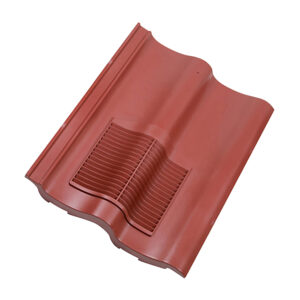Roof ventilation is one of the most underappreciated factors of roofing. It’s almost as important as protecting it from rain, and that’s no accident, since inadequate roof ventilation can leave your loft as vulnerable to water as any leak could. Without ventilation you’re at the mercy of condensation, as hot, wet air from your house becomes cold in your loft and deposits the water it was carrying. This moisture can lead to mould, which can lead to rotting timbers. Chronic damage can eventually result if this is not addressed, becoming a financial ulcer for any property owner.
But it’s very easy to completely sidestep this issue by just getting proper ventilation. This can involve vents, roofing felt, windows and several other products. However, first you need to identify the kind of roof you have.
Warm Roof vs Cold Roof
The first thing you should do is work out whether you have a warm roof or a cold roof. The difference lies in where the insulation is. A warm roof has insulation as part of the actual roof, while a cold roof has insulation as part of the floor of the loft. A cold roof solution means that the loft itself will be extremely cold, whereas a warm roof will have a loft that is almost as hot as the rest of the house.
Why is this important? Firstly, cold roofs usually can’t use breather membrane. There are two kinds of roofing underlay which go beneath the tiles on a pitched roof. Breather membranes allow water vapour to escape but only one way. This means that they contribute to ventilation by allowing water vapour to escape to the outside of the roof. Non-breather membranes, on the other hand, keep all vapour either in or out, which means they do not contribute to ventilation.
To compensate for this, felt lap vents should be used with non-breather membranes – one for every two rafter bays. These can easily be slid into the overlaps in the membrane, allowing for the passage of air into the loft.
Secondly, warm roofs in general require much less ventilation since they are warm. This means that less condensation can form since condensation occurs when hot, wet water moves into a much colder area. However, since warm roofs also increase energy bills there are many pros to using a cold roof in the long term and it’s worth ventilating them.
You will also need to check to see if your roof is pitched or flat. A pitched roof is any roof with a pitch (angle) of greater than ten degrees. All other roofs are flat roofs. In general, ventilating a pitched roof is significantly different to a flat roof because it changes what sort of ventilation you can have.
Roofing Vents
For example, having a pitched or flat roof changes your options in regards to roofing vents. There are several kinds of roof vent that can be used. One of the best kinds for any pitched roof is the tile vent. This type resembles a roof tile and can indeed take the place of a roof tile, but has a vent concealed in it. At ERoofing we stock a huge variety of roof tile vents for all kinds of tiles as well as some suited for slates.
Many roofs can also benefit from abutment vents. These are rolled out over the abutments where a pitched roof meets a standing wall. They allow even more airflow from outside into the roof from an unusual position. These can be used for both flat and pitched roofs.
You will also need to ventilate your fascia and soffit unless you are using an open eaves roof. The fascia refers to the section of vertical board underneath the eaves, and the soffit a further board that connects it to the eaves. You can ventilate this area with either fascia vents, which are continuous vents that go in between the fascia and the roof underlay, or soffit vents, circular vents which are placed in carved holes in the soffit.
Windows
Windows can also be a tremendous asset to a roof’s ventilation, especially if it’s a pitched roof. Often referred to as skylights, these can provide impressive, though irregular, ventilation by being opened. They’re especially good for airing out a room very quickly in the short term.
If you’re worried about inclement weather there’s a solution for that too. You can get automatic windows like the Velux Integra which close whenever their rain sensor detects rain. These sorts of windows have electric systems which detect moisture and trigger an automatic shutting mechanism.








